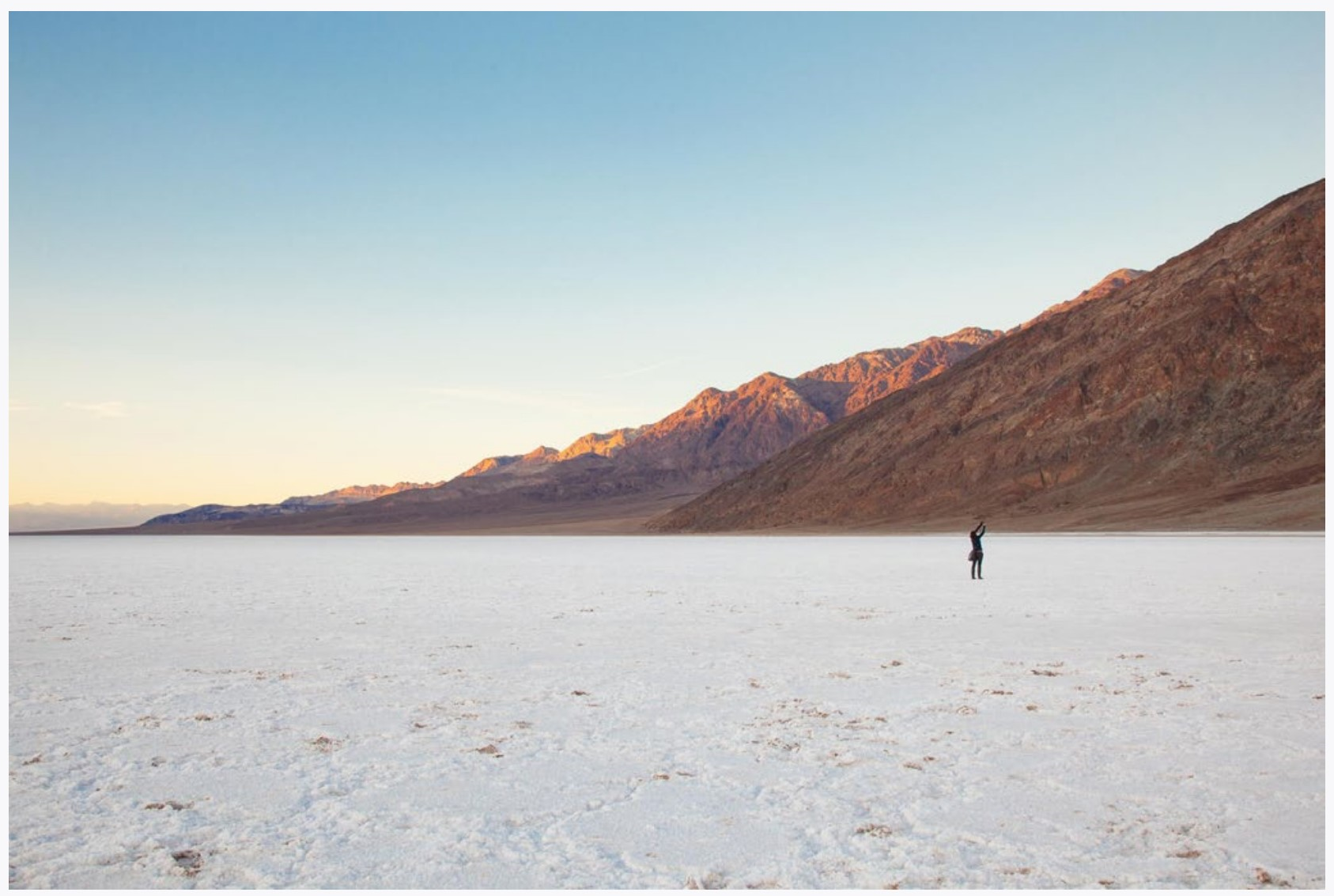4.1: 4PH SOCIAL PHOTOGRAPHY
- Page ID
- 91121
Selfie sticks are a bit sad. Before they were invented, people took photographs of where they were, not themselves in those places. And if they wanted a photograph of themself at a place, they were required to hand their camera to a stranger and trust they would be in the frame and their camera would be handed back undropped. That was the price of admission in the good ol’ days.
I would much rather see a photograph of where you were in solitude. Annotated with a description of how you felt when you saw that beautiful lake (or whatever), with excuses that the photograph really doesn’t do it justice. As a viewer I don’t want a camera grin and a badly composed shot that cheapens the whole experience. That metal pole is a poor replacement for the person you wish was there with you.
Photography is a social pursuit. Not only in the interaction of photographer and subject, but in other ways as well. After all, we take photographs to communicate with others, even if that other is your future self.
A few years back I was with my wife at Artist’s Palette in Death Valley. The sun was low, and I was taking photographs of our shadows below the cliff. Another couple saw us do this, and so they did the same thing. After a while we stopped, but other tourists joined in, and as people came and went it spread like a meme to each new set of people visiting. This is what I mean by a social pursuit. It is an acknowledgment of bonds that humans have with each other. We experience the same ways, we are all in this together. In the end we are all the same tribe.

I have hundreds of photographs of my wife in front of this or that. And in turn, these are very much like millions of photographs taken every day of friends and family in front of this or that. In other words, these photographs are quite the opposite of unique. And that is the point—I am taking part in a ritual that has gone on since photography was first invented. In many ways we all see the same thing.

The photograph reproduced on this page is of a person taking a photograph during the same trip to Death Valley. I take a lot of these photographs of people in the landscape, and in a way, they are all self portraits, even though I have not met the people. That small person, just visible, is also close and transparent. They are feeling the same things I felt when I was there. The immensity of the landscape. The hot day breaking way to a cool breeze over the salt flat. A day of exploring almost done, but you don’t want it to end.
Unless you are an ass, whenever you take a photograph of another person you are entering a social contract. Even with that little person who has no idea they are being photographed. I have taken photographs that were ‘unfair’ to the people depicted. I usually delete these—it is part of the contract.
The contract is very clear when you take a portrait of someone. The person photographed is giving something of themself and trusting the photographer to be respectful of how they want to be interpreted. That photo smile people assume when the camera is pointed in their direction is more than a convention. It is a defense just in case the photographer doesn’t understand the contract.
Of course the contracts I am talking about here are unsaid. They point to deep understandings of the responsibilities we have to each other. Sometimes photographs don’t seem to conform to these social contracts. For example, in times of extreme strife, subjects will let photographers portray them in the deepest of despair. The normal social contracts have been broken, and new ones take their place. These subjects need the world to see the injustice*. The iconic example of this is the child running naked after a napalm attack. It is a horrific image that conforms to social norms simply because of the horror. The section of this book on photojournalism presents photographers who deal with their subjects in this way.
Photographers also deal with upheavals in a cultures. E.S. Curtis was mindful of the fact that the traditional Native American culture was being decimated as he photographed those cultures. August Sander worked to depict every occupation of the German people. A testament to the humanity in his pursuit was the fact that the Nazis destroyed the resulting book. Not a lot is known about E.J. Bellocq, whose photographs of early 20th Century prostitutes describe a subculture rarely seen in history. Andrew Strout depicts an India which is quickly disappearing, Judy Dater approaches women’s issues in a personal manner, and Nicholas Nixon’s portraits done in a nursing home are powerful examples of the tenderness with which he approaches all of his subjects.
Photographing celebrities brings in a different kind of social contract, especially since many are actors either looking to increase their fame or take a break from it. Anne Leibovitz’s photographs show a different side of famous people while still being marketable. Richard Avendon’s gritty portraits of the famous are in themselves famous, while Arnold Newman uses abstraction and symbolism to define the personality of his celebrities. Larry Sultan’s images show a detached view of celebrities (and others). Yusuf Karsh, Ruth Orkin, and Philippe Halsman take more conventional approaches to describe magnified personalities.
*This is from a quote by the photographer James Nachtwey. His biographical film War Photographer is an excellent movie about photography, journalism, and dedication.

